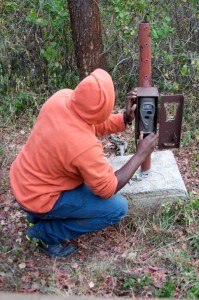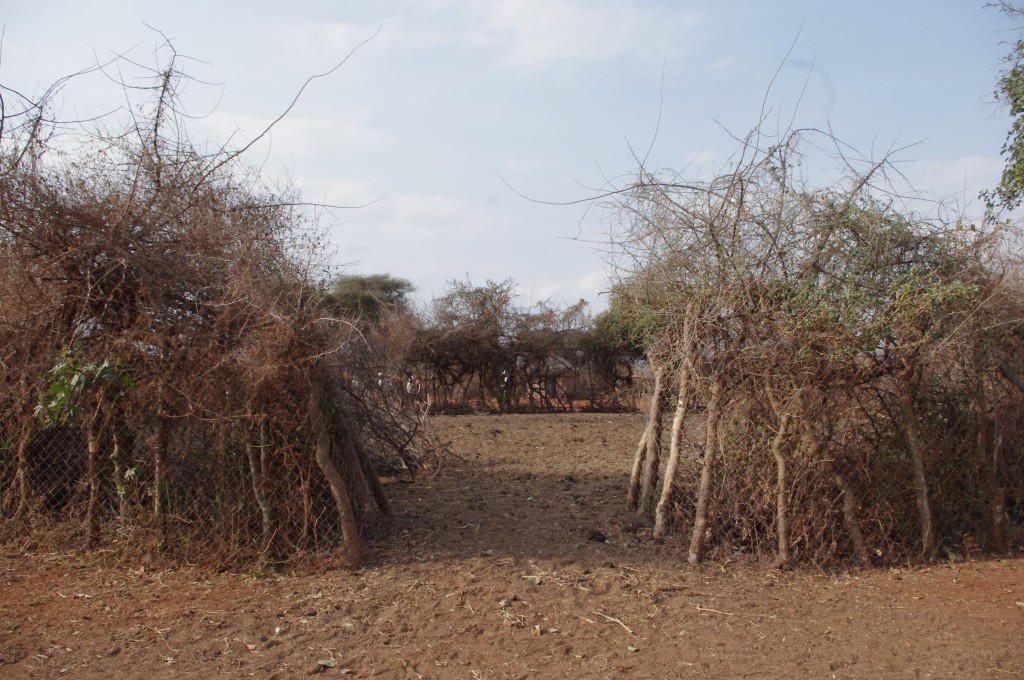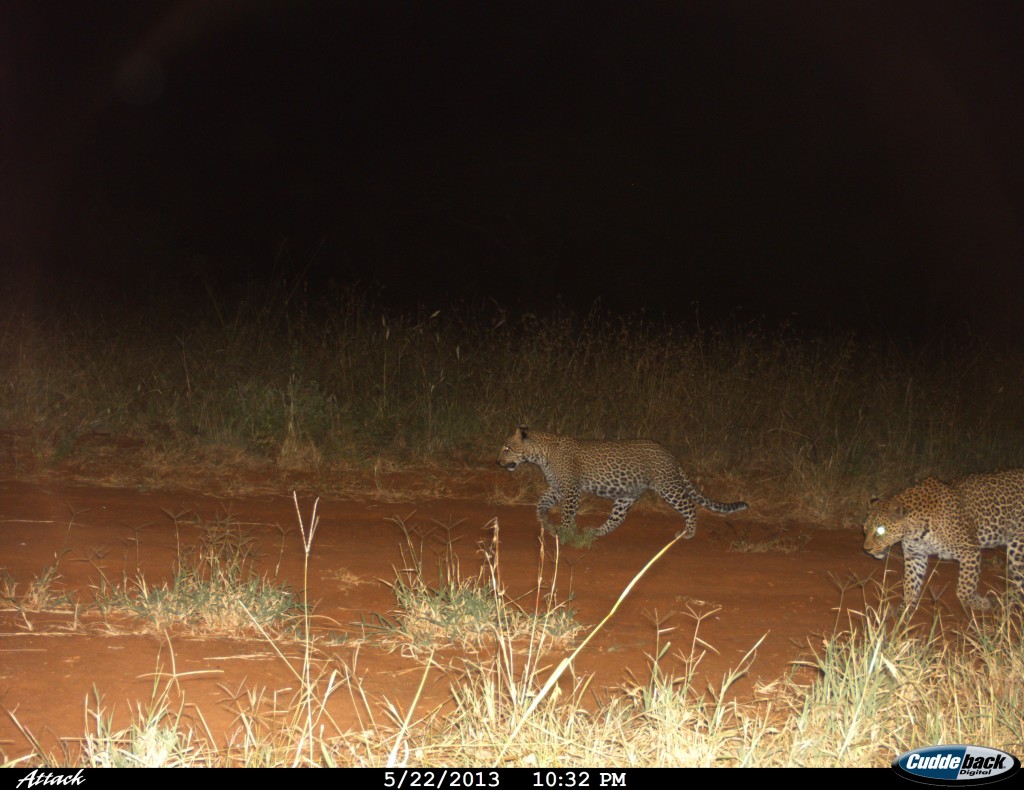June 17
The Land Rover growls and grumbles as we bounce over gullies and ditches, the hum of the engine scattering songbirds when we pass by their perches. Rounding one corner, we skirt so close to the edge of an enormous gaping hole in the ground that I involuntarily lean away from it, as if that will keep us from toppling in. Dennis is a master driver, though, and easily avoids the obstacle. Finally we arrive at the first camera trap, no more than a small dark metal box secured to a pole. Anaely, the camera trap assistant, climbs out of the car and unlocks the box, removing the camera and bringing it over to the car. He scribbles some notes in his notebook, changes the SD card, replaces the camera, and locks the box.
I have traveled 7,346 miles from New Haven to Tanzania for this short, seemingly insignificant moment. My thesis project, a camera-trap based estimate of lion and leopard populations, depends entirely on the photos captured on the tiny SD card, and it strikes me as ironic that so much effort, money, and time should be spent for access to such a small piece of equipment.

The African People & Wildlife Fund (APW), located just outside the southeast corner of Tarangire National Park, is my host for the summer. APW has successfully built a partnership with the local village, Loibor Siret, to reduce attacks on cattle by large carnivores, particularly lions and leopards. When an attack happens, the Maasai pastoralists whose entire livelihoods depend on the cattle often retaliate in the only way they can: by poisoning the offending predator. These poisonings threaten both the local lion and leopard populations and the scavengers who clean up what the cats have left, particularly vultures, hyenas, and jackals.
Since most of the poisonings occur in direct response to attacks on cattle, APW’s director, F&ES graduate Dr. Laly Lichtenfeld, worked with the community to design a special type of corral (known as a “boma” in these parts) that is impenetrable to carnivores. “Living Walls,” as these bomas are called, are made of live acacia trees. They begin with a chain-link fence and acacia cuttings planted around the inside. After two years the trees have fully matured into a solid thorny barrier and the chain-link can be removed and reused. Since the program started in 2008, APW has erected 228 Living Walls, and not a single head of cattle has been lost to predators inside the bomas. It’s a wildly successful program that is catching on – APW has a wait list of more than 100 families – but the big question is: what does it do for the carnivores?
The only way to know for sure whether the Living Walls bomas are preventing killing of carnivores is to monitor their populations, which is easier said than done. Laly’s dissertation, under the direction of Drs. Stephen Kellert and Os Schmitz, assessed local attitudes toward lions and estimated the lion population via track counts. Although this monitoring has continued for nearly a decade, APW has decided to take the program a step further by launching a camera trap study. That’s where I come in.

We are going to deploy pairs of cameras in a grid across the region starting with a remote area north of APW’s camp, Noloholo. Having two cameras facing one another will allow us to have simultaneous photos of the same individual, so in the case of leopards we’ll be able to identify specific individuals based on their coat pattern. Over time APW will add cameras to the grid until, ideally, they’ll have them across most of the village land. My job is to perfect the method APW will use for setting up and handling the cameras and data so that as the study is scaled up, the data aren’t lost or jumbled.
Dennis climbs into the Land Rover, starts up the engine, and pulls away. Although we are waiting for some supplies to arrive from the US to start the study, we have set up a few cameras near the camp for fun. Back at the office we find a photo of a female leopard and her six-month old cub on the SD card, and I find myself feeling optimistic that because of APW’s work with the residents of Loibor Siret, this little female will one day grow up to raise her own cubs.
